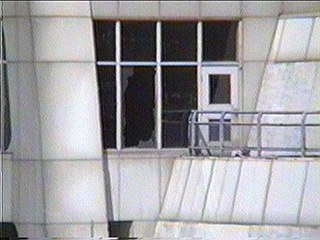



1) Apartments at the north end of the Cambie Bridge. The tallest building is located on what was an Expo parking lot. The grassy hill is where (from left to right) the Swiss Pavilion, gift shops, an Asian specialties restaurant and the west end of the Aviation Plaza were situated. In 1986, the photographer would have been standing close to the 747 in the Aviation Plaza.
2) Westernmost section of the construction to date during low tide. The vantage point in 1986 would be somewhere around the U.S.A. pavilion looking east towards (where the buildings are) the Quebec, United Nations and Italy pavilions. The pier and promenade that housed the Cuba, Cote D'Ivoire and General Motors Pavilions has been dismantled.The buildings that were built as "legacy structures" are in remarkably good condition and are in use today. There were a few non permanent buildings that some people wanted to keep, but by the end of the fair's run it was evident that that the pavilions were only designed to stand for 6 months. Paint was just starting to peel and plaster was beginning to buckle by closing day.


1) BC Place as seen from the rain forest grotto.
2) Engine 374, the engine that pulled the first passengers into Vancouver in 1886, now rests inside the Roundhouse.Click here for an update on the Canada Pavilion/Canada Place.
For a short time after the fair the Soviet pavilion was used as a storage area and later a film & television sound stage, but besides that, the fair was quickly dismantled.
So what is left other than Canada Place, BC Place and Science World. The answer is not much. However, in some far corners of the old Expo site where the urban renewal projects have not yet reached, a keen eye can still spot a few modern ruins.



1 & 3) Floor tiles in what was the Red Zone. By the location it is my guess that the tiles may have belonged to the Yugoslavian/Romanian pavilion and the Pavilion of Promise -- respectively..
2) Grass slowly engulfs the pavement on the edge of the Blue Zone.The modules used for most of the pavilions were sold to various corporations around the world. One such company that bought several modules is the Scott Paper Co. The modules can be seen from the highway along the Fraser River just west of the City of New West Minister (pictures to come).
The Monorail was originally to be used as an inner-city shuttle between the beaches of English Bay and the downtown core. The idea was scrapped after concerns of noise pollution erupted from homeowners in the West End neighbourhoods.
Shipped to England and rebuilt in 1990, the monorail is now in service at Alton Towers amusement park.
The McDonalds Friendship 500 floating restaurant (nicknamed the McBarge) still survives -- albeit in rough shape. After the fair, McDonalds asked to dock the restaurant for operation in other areas of the city but every proposed site was refused. Today, the McBarge is anchored in the waters just off the north side of Capital Hill. It has apparently been forgotten by everyone except vandals.





